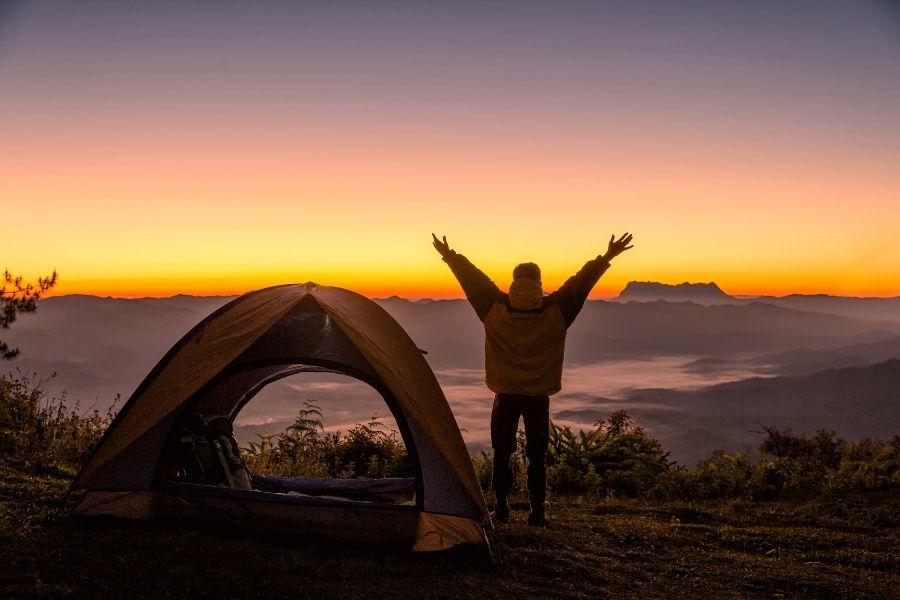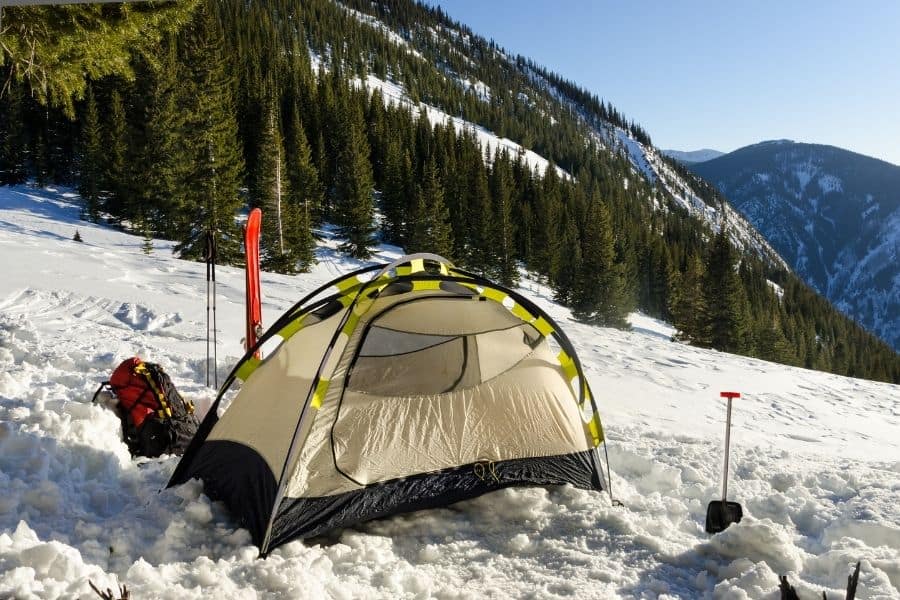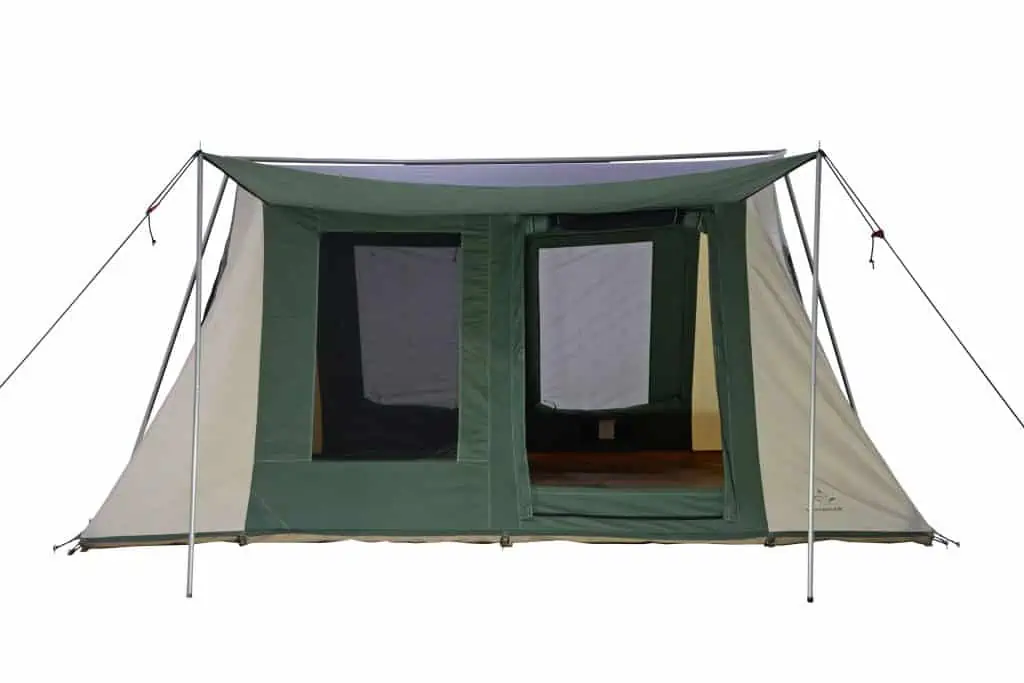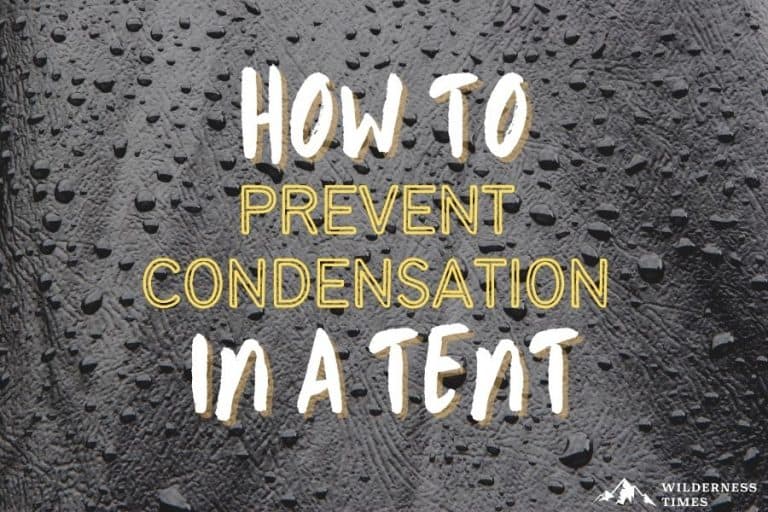Condensation is one of the biggest pet peeves of every camper. The last thing you want when you’re out in the wilderness is your tent turning into a sauna overnight.
Condensation is hard to avoid, especially if you don’t know how!
Well, that’s why we’re here. In this article, we’ll go over its causes, as well as how to prevent condensation in a tent. Keep reading to find out more!
9 Ways To Prevent Condensation In Your Tent
There’s nothing good about condensation. It’s unpleasant and makes you wet and cold.
At low temperatures, this can be quite dangerous.
But don’t worry, there are a few things you can do to prevent condensation:
1. Choose Your Campsite Carefully
Your choice of campsite location can make a huge difference when it comes to condensation.
Some places are more conductive than others, and it’s usually the most appealing ones that turn out to be problematic.
Here’s what you should pay attention to when picking the camp spot:
Pitch On Dry Ground – If the ground is still wet from recent rainfall, all that moisture will evaporate once temperature rises mid-day.
Look for spots underneath the trees where the ground was at least somewhat protected from rain.
Now of course, sometimes you won’t be able to find a dry spot for pitching a tent. Place a tarp underneath to make a barrier to prevent moisture seepage.
Stay Away From Sitting Water – Any source of water nearby can increase overall humidity around your campsite, whether its river or a pond. Don’t even get me started on swamps.
Ideally, you should always pitch your tent at least a few hundred yards away from any standing water.
Choose A Place With A Breeze – Try to figure out the wind direction, then pitch your tent so that the doorway is facing it.
This will allow cold air to circulate and cool down your tent, thus lowering the humidity.
Avoid Setting Up At A Low Point Or Open Field
Low-lying valleys might seem like a good spot for pitching the tent, but they’re a real disaster when it comes to condensation.
Because the airflow typically diminishes at night, more moisture can collect, so you’ll wake up in a sauna.
2. Pitch Your Tent Properly
This is especially important for double-walled tents.
The rainfly is designed to draw condensation away from your tent body, thus keeping it dry.
But if you don’t make it taut, the two layers will touch and transfer condensation between them.
And since, in most cases, the inner body is not waterproof, this will soak your tent and make an even bigger problem.
3. Ensure Proper Ventilation

If the weather allows it, always leave the vents open.
The same goes for the doors, leaving just the mesh zipped.
If you can’t leave it like that for the duration of the day, then at least do a quick venting before sleeping, by opening all your doors and vents fully open.
4. Keep Wet Gear Outside Of Your Tent (Or Use Dry Bags)
Anything that’s wet will cause condensation, including your soggy socks.
Leave all your wet clothes and gear outside.
If your tent doesn’t have a vestibule or awning, make a storage shelter with a tarp.
If you simply can’t leave your gear outside, use a dry bag.
Just as it keeps whatever’s inside from getting wet, the dry bag will keep your tent free from condensation coming from your wet things.
5. Remove Your Rainfly When Not Need

A rainfly is your savior in raining conditions, but you don’t need it when the weather is nice.
Without it, you’ll have a much better airflow, through all the mesh parts of your tent.
6. Don’t Cook In Your Tent
You shouldn’t cook inside your tent not just because of condensation, but for safety reasons as well (unless your tent has a vent).
First, your tent, as well as most of your camping gear is easily flammable.
And second, stove fuel can cause carbon dioxide poisoning, which can be deadly.
7. Get A Tent Dehumidifier or Air Conditioner
While a tent dehumidifier won’t completely solve the issue, it can alleviate some of the condensation. There are a few options available, different in cost and usefulness.
Dehumidifier bags, usually filled with silica, are the most affordable option, but will only work with smaller tents.
For larger ones, you’ll need a fan-operating machine that costs a lot more.
Plus, it requires an electrical outlet, so you can’t use it just anywhere.
8. Buy A Tent With Breathable Fabric

As far as breathability goes, nothing can beat good ol’ canvas. However, they do come at a much larger price than synthetic alternatives.
When it comes to polyester and nylon tent materials, double-walled tents encourage more airflow through their large panels.
Single-walled tents are coated with a water-resistant layer, which lowers their breathability.
9. Dry Your Sleeping Bag Daily
Our bodies release moisture that gets trapped inside a sleeping bag, so expect to wake up with a damp sleeping bag if it gets hot at night.
If you leave it inside the tent the whole day, it won’t dry out. What’s more, it will just create additional condensation.
To avoid that, take out the sleeping bag when you wake up and let it dry out in the breeze.
How To Deal With Tent Condensation If It Occurs
- Pack a towel to wipe down the tent walls as soon as you notice they’re getting damp on touch
- Don’t press on the tent sides too heavily as it can cause water to seep through
- Ventilate as often and as much as you can so that moisture can escape
- Take all the wet stuff out of the tent
Best Ways To Ventilate Your Tent
- Pitch a tent with the door facing the breeze
- Keeping your tent door as well as rear vents open allows most airflow
- Remove the rainfly whenever the weather allows it
- Use a battery-powered fan
- Declutter the tent from backpacks, sleeping bags, pillows and other parts of your gear that can obstruct airflow
What Causes Tent Condensation?
Condensation happens when the warm air inside the tent hits the cold tent fabric. This usually occurs at night when temperature drops suddenly.
Now you might be wondering, what makes all that warm air if you’re not using a heater? Well our bodies of course!
Did you know that a single person can add up to half a pint of water to the air overnight?
Aside from our own bodies, wet gear, hot cup of tea and even your dog also add up to all the moisture in the air.
Tent Condensation FAQ
What Tents Are Best For Avoiding Condensation In Your Tent?
There’s no magical tent that can completely avoid condensation.
Single-walled tents will work in warmer weather, when you can keep the doors and vents open.
Double-walled tents are better for rainy weather (best waterproof tents).
While they won’t prevent condensation from happening, it will collect on the rainfly instead of on the inner tent.
What If Your Sleeping Bag Gets Wet?
The water-repellent coating on sleeping bags makes them collect body vapor during hot nights.
So if you wake up with a damp sleeping bag, take it out on the breeze and sun to dry out before the next night.
You should do this even when you’re trekking or backpacking. Stop for a midday break and take the bag out so it dries out while the sun is still high up in the sky.
What If It Is Raining?
Obviously, wet weather increases chances of condensation.
If you’re using a double-walled tent, make sure to keep the rainfly as taut as possible, so that moisture is drawn away from your inner tent body.
Things are trickier for single-walled tents. You can’t prevent condensation from happening, but you can react quickly and wipe it away as soon as you see it collecting.
What If Your Tent Is Soaking Wet In The Morning?
If you’re going to camp in the same spot for the next few days, it’s best to leave the tent as it is to dry out in the sun.
But if you’re going and need to pack it up, make sure to dry it out with a towel as much as you can beforehand.
Make sure to pack it in a waterproof bag so that it doesn’t get your other stuff wet.
Summing Things Up
Condensation is a natural thing that even the most experienced campers have to deal with.
But as long as you know what creates it, you can take adequate measures to manage it and enjoy a good night’s sleep.


